Effective immediately masking is required for everyone when present on all inpatient units, in the Emergency Department (ED), the Urgent Care Centre (UCC), and the Children’s Outpatient Centre (COPC).
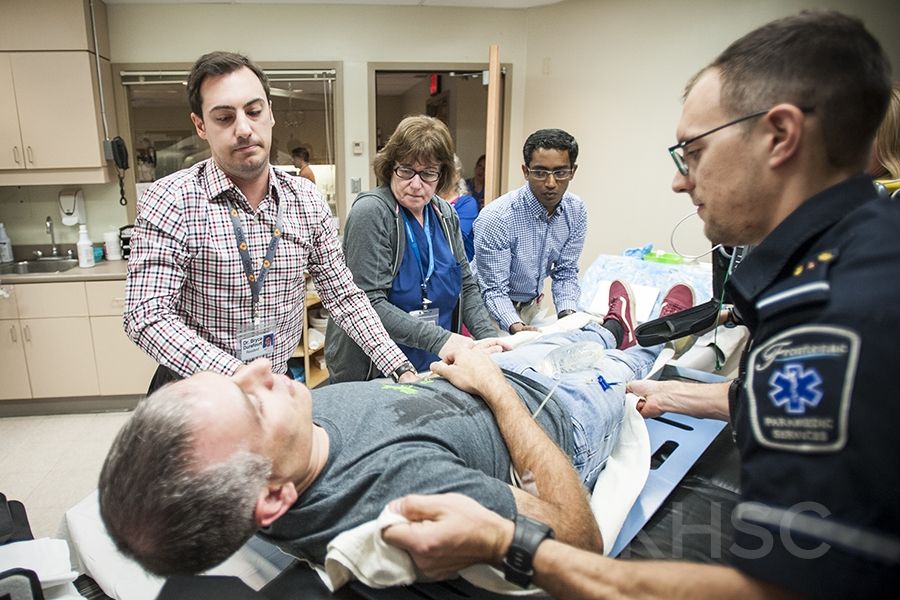
A new stroke treatment is now available 24/7 at Kingston Health Sciences Centre (KHSC) and it’s already proving to be a game changer for some patients. KHSC has become one of a small number of hospitals in Ontario that is now able to offer this procedure, opening the door to treatment for the 500,000 people living in KHSC’s catchment area.
The procedure is called an Endovascular Thrombectomy (EVT) and to qualify for it, the patient must be experiencing a severe stroke that is caused by a large clot near the base of the brain. During the procedure a multidisciplinary team of experts work together to delicately remove that clot.
“This is one of the greatest advances in stroke care in the last 20 years,” says Cally Martin, Regional Director of the Stroke Network of Southeastern Ontario. “To be able to extract a large clot and thereby allow blood flow to return to the brain is very exciting. We have entered a new era of stroke care.”
When a patient arrives in KHSC’s Emergency Department suffering from a suspected stroke, the clock starts ticking. The first step is to get the patient into a CT scanner in less than ten minutes so experts can see images of the arteries in the brain and find the clot that is causing the stroke.
The patient may quickly be given a clot-busting drug (known as tissue plasminogen activator or tPA). If the clot is large, in the right place, and there is enough time left, the person is then moved to an Interventional Radiology suite.
When the treatment starts one of KHSC’s Interventional Radiologists inserts a catheter into the femoral artery (in the groin) and using image-guidance technology navigates to the brain. They then place a stent-like device, which is attached to a wire, across the clot in the brain so the two can mesh together. After a few minutes, the device is pulled out along with the blood clot. If all goes well, the blood flow is re-established into the affected area of the brain immediately.
“Our brains are extremely complex and sensitive,” says Dr. Albert Jin, stroke neurologist and Regional Stroke Medical Director. “An estimated two million neurons die every minute they are deprived of the oxygen and other nutrients that are delivered by our blood. It’s extremely important we have smooth processes in place to carry out the treatment as quickly as possible.”
KHSC began piloting the treatment after a series of landmark clinical trials showed it can significantly improve the outcome and reduce the mortality rates for patients who might not respond well to other types of treatment. During the pilot KHSC teams treated a number of patients and the results were impressive.
“We’ve seen instances where patients have gone from being completely unable to move or speak and within minutes of the procedure being completed, they are talking and shaking hands with our doctors and nurses,” says Dr. Jin. “These are patients who are experiencing the most severe types of strokes and in the past likely would have been left with severe paralysis if they survived. We’ve never seen patients recover this quickly.”
The treatment requires that a number of departments from across the hospital, particularly the Emergency Department, Diagnostic Imaging, Interventional Radiology, Critical Care and Neurosciences, along with the five paramedic services and partner hospitals in our region, work together to quickly offer the service to patients.
“This has required extensive cooperation between clinical programs in the hospital, as well as our external partners and is a great example of how KHSC can achieve great things for our community through teamwork and commitment,” says Jin. “This partnership is allowing us to revolutionize stroke care across our region.”
Of course it’s also vitally important that patients get to the hospital as quickly as possible so that treatment can begin.
“A Stroke is a medical emergency and you can use the acronym F.A.S.T. to check for the signs of a stroke,” says Martin. “If you experience any of these signs, call 9-1-1. Do not drive to the hospital. An ambulance will get you to the right hospital for stroke care.”
- Face - is it drooping?
- Arms - can you raise both?
- Speech - is it slurred or jumbled?
- Time - to call 911 right away
Gallery
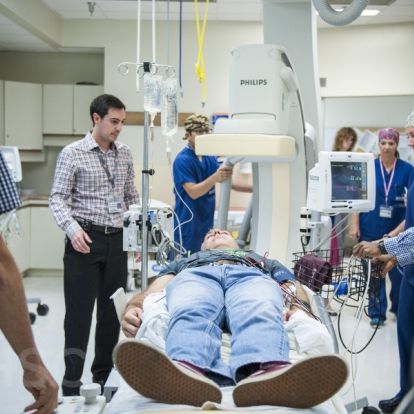
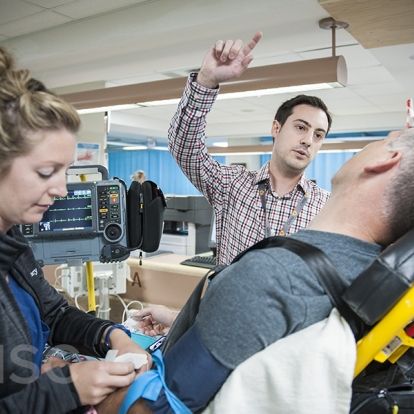
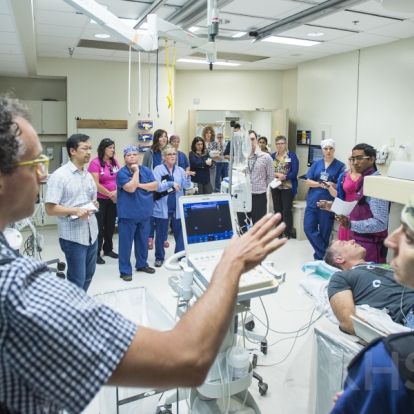
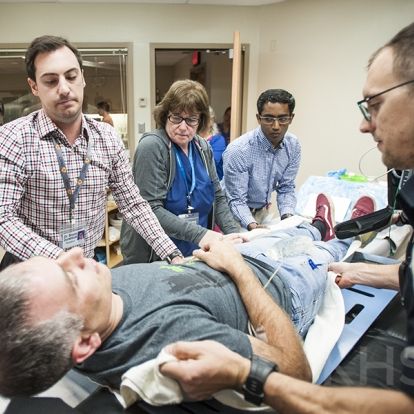
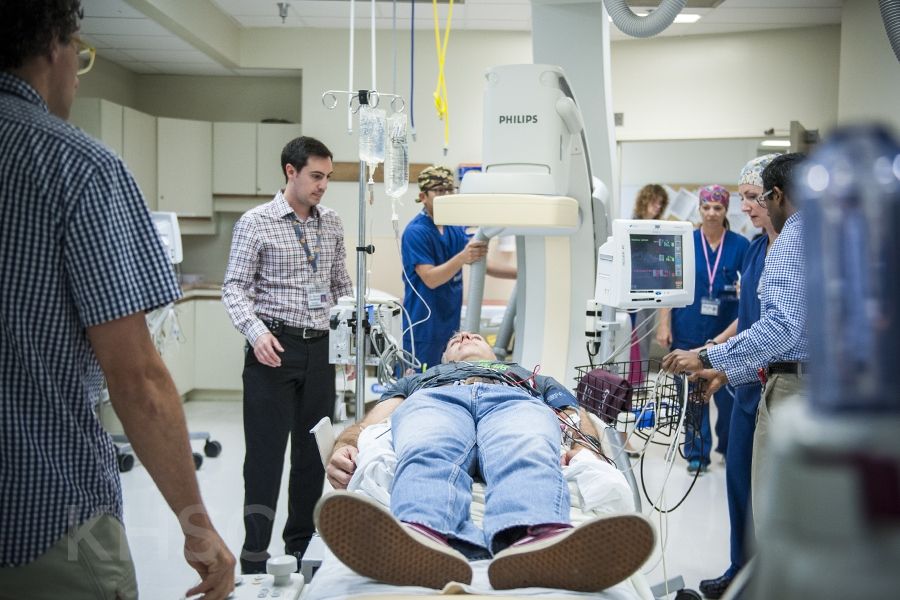
KHSC staff and physicians in an Interventional Radiology suite during an EVT simulation case
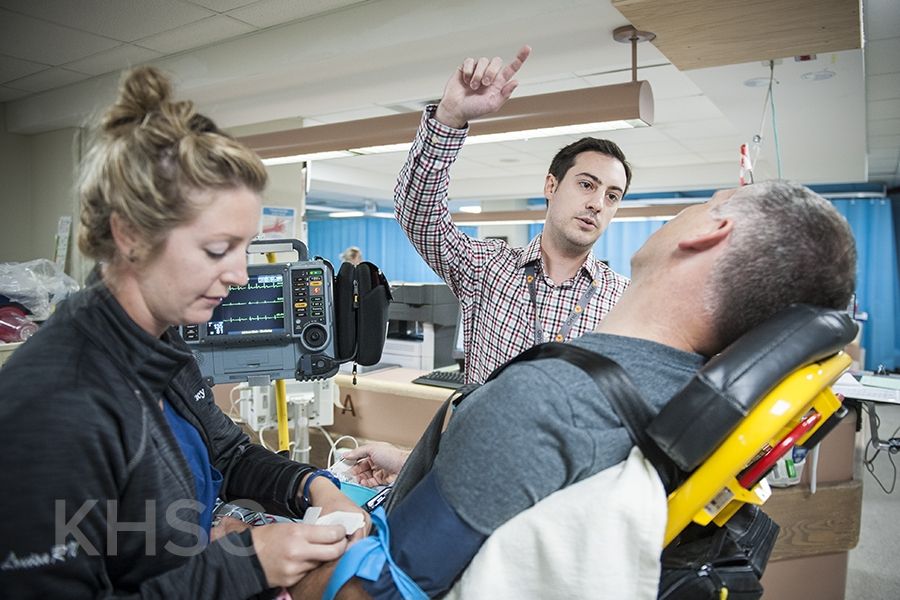
KHSC staff and physicians with with a mock patient in the Emergency Department during an EVT simulation case
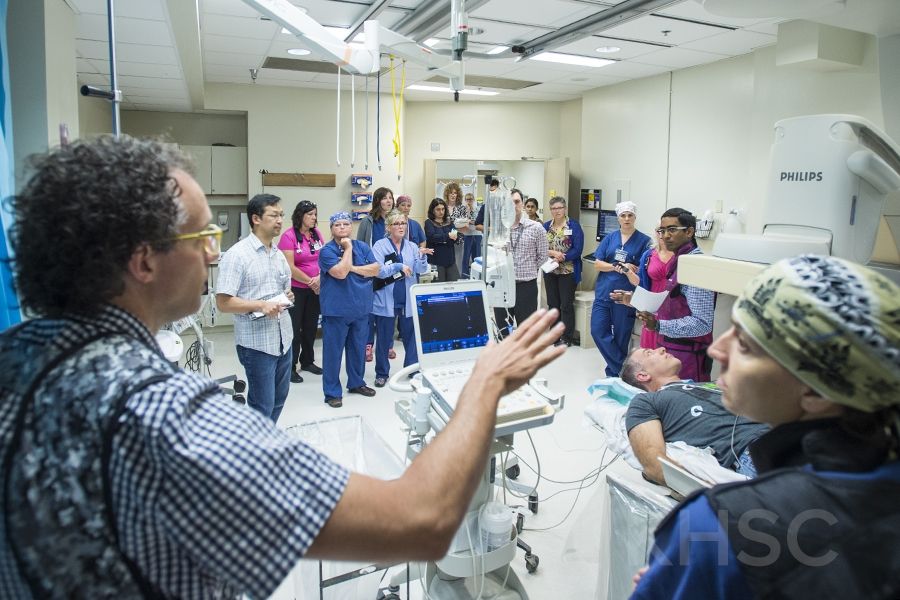
KHSC staff and physicians in an Interventional Radiology suite during an EVT simulation case
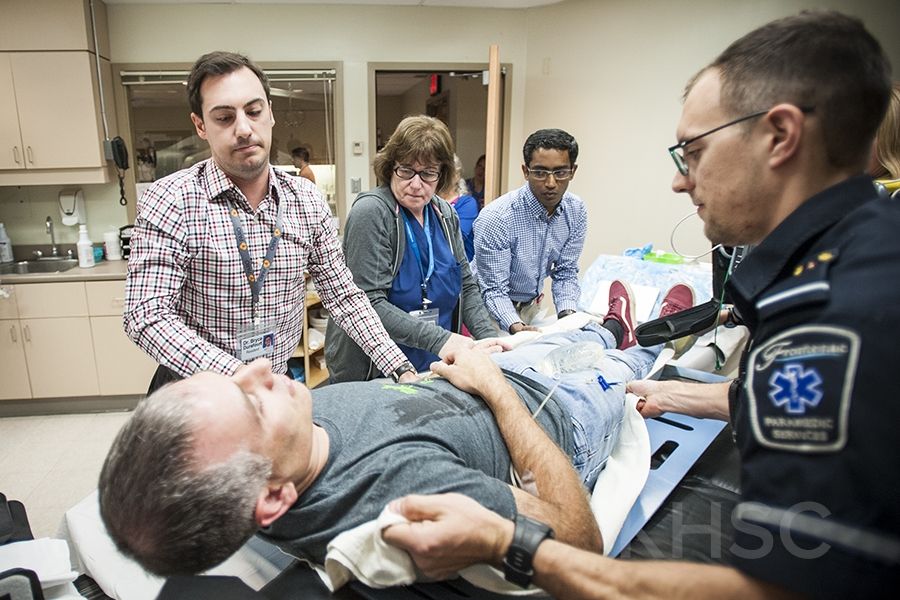
KHSC staff and physicians along with Frontenac Paramedic Services participate in an EVT simulation case



